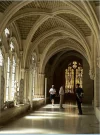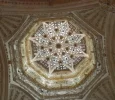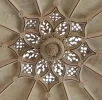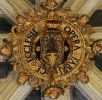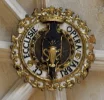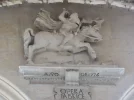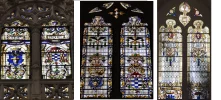Yet another question about Burgos Cathedral!
I have forgotten exactly where I was when I took the photo, it's not important, but, if you know where the window is, I'd be pleased to know. My question is: What does Opera Fabrice mean? I know the literal meaning of 'opera': Works. Fabrice: the building. S, perhaps, "works on the building". But what does that mean and why display it in a window? There is a date at the top, 1547. Above the word 'Opera', there is a man's head. It looks like someone from antiquity, Greek or Roman. At the bottom, there is a crown. Above the word 'Fabrice' there is a woman's head, I'm hard pushed to say what she looks like. At the bottom there is what I think is a cardinal's cap. If you can explain any of the symbolism, I'd love to hear it. Thanks!
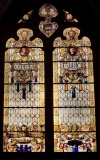
I have forgotten exactly where I was when I took the photo, it's not important, but, if you know where the window is, I'd be pleased to know. My question is: What does Opera Fabrice mean? I know the literal meaning of 'opera': Works. Fabrice: the building. S, perhaps, "works on the building". But what does that mean and why display it in a window? There is a date at the top, 1547. Above the word 'Opera', there is a man's head. It looks like someone from antiquity, Greek or Roman. At the bottom, there is a crown. Above the word 'Fabrice' there is a woman's head, I'm hard pushed to say what she looks like. At the bottom there is what I think is a cardinal's cap. If you can explain any of the symbolism, I'd love to hear it. Thanks!









